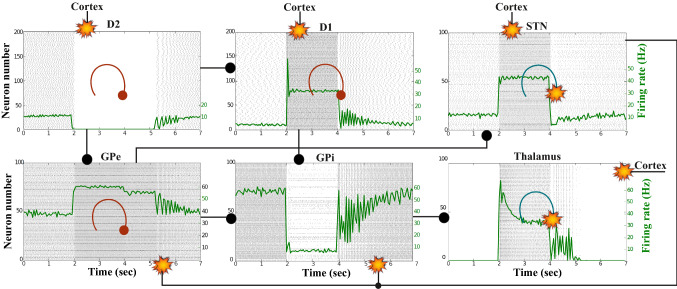Fig. 13.
Healthy behaviour: adequate response to external stimulus with a high enough dopamine level ( and ) to make the BG direct pathway dominant. Raster plots of the spiking activity of the relevant simulated populations of neurons when the BG action selection (direct) pathway is enabled by an adequate dopamine level while an external stimulus is applied into the cortex. The associated dopamine level, the external stimulus and the NMDA-cortical neurons’ response applied to the -MSNs, the -MSNs, the STN and the thalamus are given in Fig. 12. Each black dot corresponds to a spike of the corresponding neuron at a given time. For each population, the green functions on the raster plots show the average firing rate for the 20 simulations produced. The raster plots are for one of these simulations. The sparks indicate excitatory connections, whereas the circles are inhibitory connections. The DA release causes the depolarisation of the -MSNs and the hyperpolarisation of the -MSNs. The inhibition of the -MSNs in the striatum flows directly to the GPi. In turn, the GPi releases inhibition over the thalamic neurons

